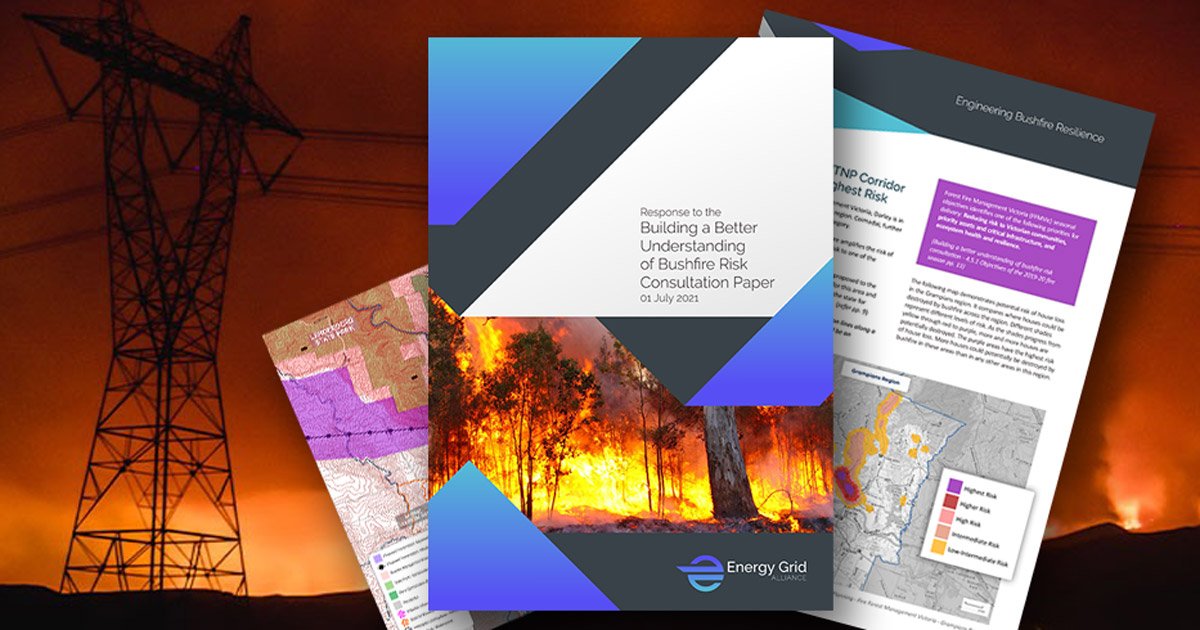Response to the Building a Better Understanding of Bushfire Risk Consultation Paper

Building transmission lines along a bushfire prone transmission corridor would be an example of resilience deterioration
On 02 June 2021, the Department of Environment, Land, Water and Planning (DEWLP) released the 'Building a better understanding of bushfire risk' consultation paper. The purpose of this consultation was to understand views around the following aspects:
- How DELWP can improve community understanding around bushfire risk and fuel management.
- In developing a whole of sector bushfire strategy, what are the areas of bushfire management that should be considered and prioritised?
- How should fire agencies be responding to, mitigating, and adapting to climate change?
- What you consider to be a realistically achievable percentage for bushfire risk reduction through fuel management and your reasoning for it?
Energy Grid Alliance have provided a submission to this consultation paper with an emphasis on routing transmission lines away from, or undergrounding, energy infrastructure to build increased network resilience.
Submission summary
According to AEMO, "good engineering design will ensure that any new infrastructure does not lead to unsustainable deterioration in grid resilience. Building additional transmission lines along a bushfire prone transmission corridor would be an example of resilience deterioration".
Increasingly, energy system vulnerabilities to heightened climate impacts, particularly extreme weather, are recognised as material risks to individual assets, the integrated energy system, and society.
To help defend Victoria's communities, economy and the environment against extreme weather events and future-proof critical energy infrastructure, the Victorian Government and network operators needs to adopt best planning practices and design resilience into the grid by avoiding or undergrounding bushfire prone regions and heavily forested corridors.
Routing critical transmission infrastructure away from bushfire prone areas or underground, would enable our energy networks to better withstand extreme weather events and build increased network resilience.
This submission includes:
- Introduction and Context
- Responses to Guiding Questions
- Case Study: Western Victoria Transmission Network Project (WVTNP)
- Case Study: Proposed WVTNP Corridor Represents Highest Risk
- References
- Northern Darley area impact map with preferred transmission corridor overlay

